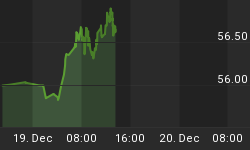1/3/2010 6:18:05 PM
Before we launch our Covered Calls Service, we'll be offering it here on a complimentary basis. Please let us know what you think.
Cut your research time in half or more! As a member of our Covered Call Service, you will have access 5 covered call tables. The 5 tables are loaded with information to help you find covered call opportunities. We save you time and help you make money by putting our powerful tools to work for you in scanning the entire market and selected indices and identifying the top 10 (or more) covered call options plays in 5 top groups as follows:
• Entire Market Top 10 Covered Calls

• Nasdaq 100 Top 10 Covered Calls

• Index ETFs Top 10 Covered Calls

• Russell 2000 Top 10 Covered Calls

• S&P100 Top 10 Covered Calls

Each list is sorted by the Return Rate to Expiration. As you can see, some covered calls can produce a potential annualized return rate of 75 to over 100% - so you can see why this is such a lucrative endeavor! Second consideration is the probability of a profit.
Here is a summary on how you can put covered calls to work for you.
Covered Calls
The basic covered call is a relatively simple strategy. The owner of a security sells the right to have their security purchased at a predetermined price in the future in return for money now. If the security price does not fall over the life of the option, the call writer will keep the premium collected when the call was sold. The call writer's profit is limited in exchange for the premium.
Strategies for covered call writing depend on the objective.
• Supplement Return
Covered call writers interested in supplementing the return of existing holding will tend to sell covered calls out of the money. The expectation is not that the security price will rise, but that it will not fall. The seller of out of the money calls often expects to continue holding the security, but hopes to reap some extra return from the proceeds of selling the call.
• Hedge Against Loss
Covered call writers can protect against downside price movement by selling in the money calls. This is commonly done after a rise in a security that is already held, to protect some of the gains that were already made. Although less time premium is collected on the call, the risk of loss is lessened by the amount that the call is in the money.
• Speculative Strategies
There are strategies that set objectives such as Doubling in 2 Years, or earning 10% a Month. A portfolio can be doubled in two years by successively selling covered calls that return 50% time premium for a term that last approximately 1 year. It is also possible to sell covered calls that return 10% in approximately one month. Both of these strategies require that the underlying stock price is at or above the strike price at expiration, and that this goal can be achieved repeatedly. Theoretically, a stock will lose some value 50% of the time.
• Risks of Covered Call Writing
Writing covered calls is generally considered a conservative option strategy. This only holds true if covered calls are written on conservative stocks. The covered call writer will suffer losses if the underlying security price drops. The most significant measure of this risk is the volatility. Writing covered calls on stocks with low vlatility is conservative. Writing covered calls on highly volatile stocks is inherently more risky.
• Effect of Dividends on Calls
When a stock pays a dividend, the price of the stock is reduced by the amount of the dividend. For example, if Frontline (FRO) closes at 41.50 and pays a $2.00 dividend, the open price will be adjusted downward prior to the open to $39.50. There may appear to be an advantage to the call writer, since it is known that the price of the stock will drop. Why not sell the $40 call when it is known that the stock will drop $2? The short answer is that the call is discounted to reflect the impending drop in the stock price.

Want more? Visit the home page and sign up for our daily blog, or follow us on tweeter and facebook. www.stockbarometer.com
Regards,















